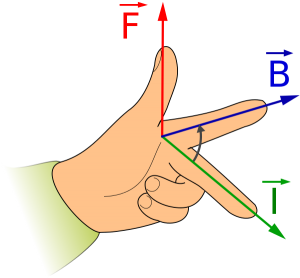No magic involved.
On the former one could conclude that some magic is used, it isn’t. The audio system is based on ’hard core’ laws of physics. Here the basic laws of physics for audio reproduction.

F = Bl • I
- The driving force of a dynamic loudspeaker is current (I).
- Where Bl is the force factor of the loudspeaker driver.
- Current-drive gives full control over the driving force.

F = m • a or a = F / m
- Acceleration of the diaphragm of the loudspeaker driver creates the sound (SPL – sound pressure level).
- Force creates the acceleration of the diaphragm of the loudspeaker driver.
V = I • Z
- With a traditional amplifier with voltage-drive and a loudspeaker driven by current there is an implicit conversion from voltage to current.
- Impedances in the path of amplifier and loudspeaker driver play a role in the conversion:
- Output impedance of the amplifier
- Connectors
- Cables
- Passive filters of the loudspeaker
- Resistance and inductance of the voice coil of the loudspeaker drivers
- The back electromotive force (of the microphone effect of the loudspeaker drivers)
- All these impedances disturb the audio signal.
- Impedances in the path of amplifier and loudspeaker driver play a role in the conversion:
- With current-drive there is no implicit voltage to current conversion and the amplifier has direct control over the loudspeaker driver. All electrical influences are eliminated and back-emf is eliminated also.
- With current-drive you eliminate all the above mentioned influences (So you don’t need fancy cables and gold plated connectors anymore. There is no influence!).
ε = Bl • v
- A loudspeaker driver is also a microphone!
- Movement (v) of cone the loudspeaker driver creates a voltage (ε, called back electromotive force) over the driver.
- This is the origin of the impedance peak of loudspeaker drivers and is the source of electrical damping.
- Every movement creates voltage. Not only the movements for creating the sound as intended by the input signal, but also movements created by sounds in the enclosure, nearby drivers, external sounds, vibrations in the cone and other disturbances.
- The created voltage (ε) disturbs the voltage on the input. So the microphone effect creates feedback of all cone movements to the input signal, when a traditional amplifier with voltage-drive is used.
- Current-drive eliminates all microphone effects. So there is no feedback of cone movements to the input of the loudspeaker driver.
